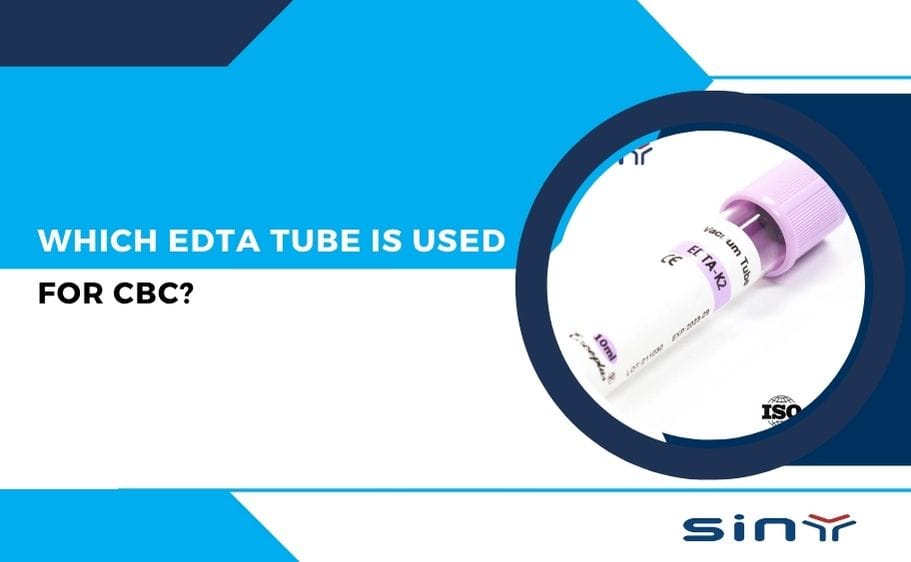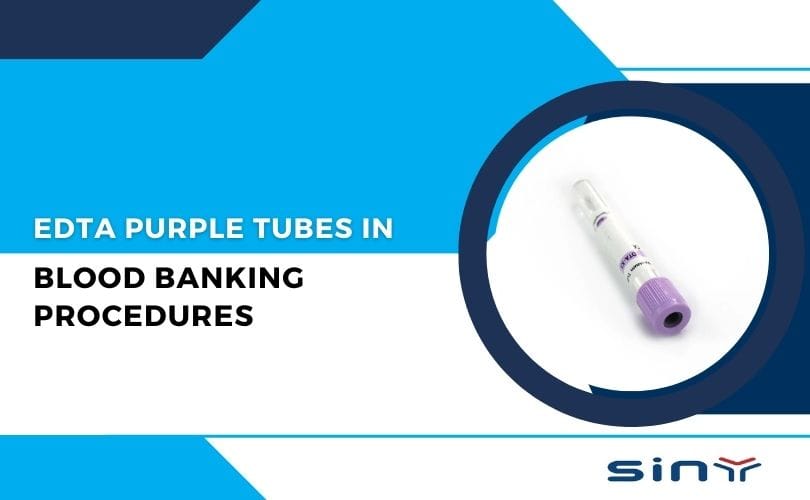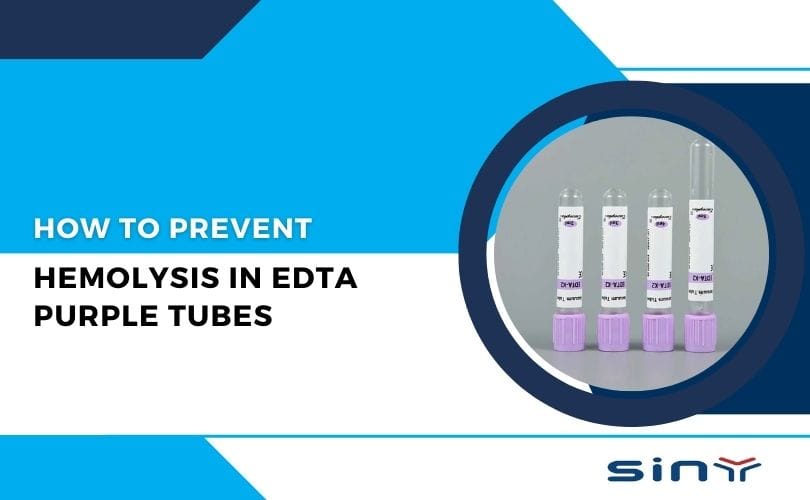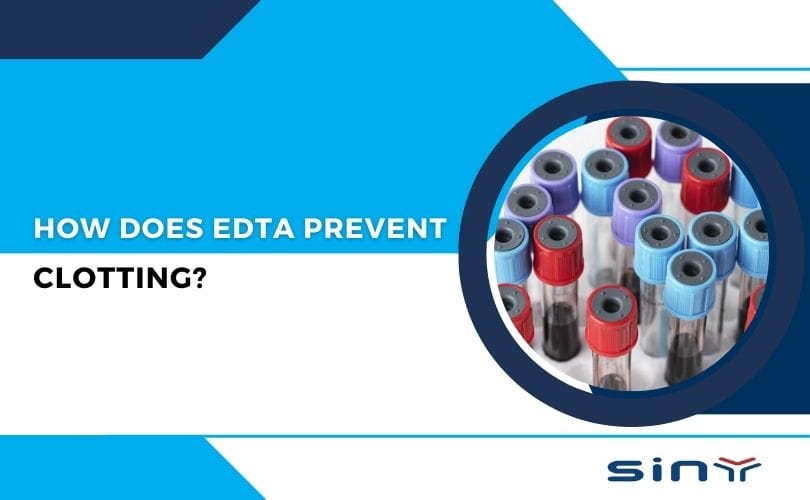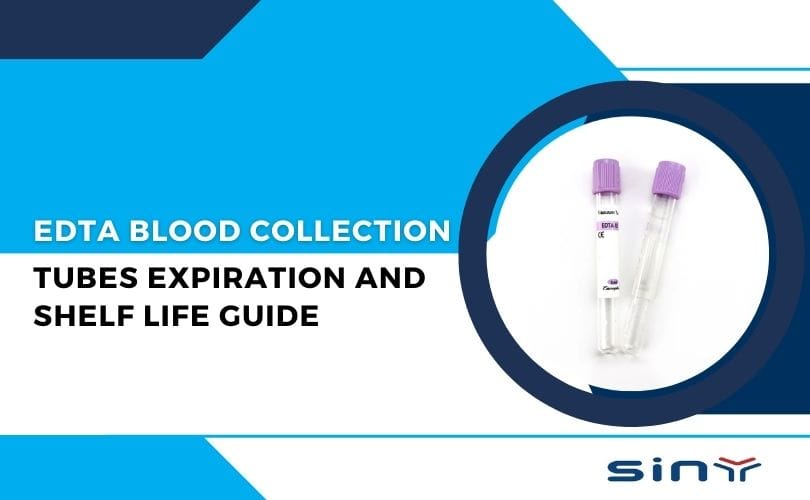EDTA (Ethylenediaminetetraacetic acid) is an anticoagulant—a substance that keeps blood from clotting once it’s drawn. The EDTA tube contains a precise amount of this chemical, ensuring that the cells in your blood sample stay intact and don’t clump up before lab testing.
These tubes are widely used in hematology because they preserve cell morphology better than other anticoagulants, allowing for more accurate diagnostic results.
There are different types of EDTA tubes used in labs worldwide, but the most commonly used ones for CBC testing are the lavender or purple-top tubes containing K2 or K3 EDTA.
What is an EDTA Tube?
An EDTA tube is a vacuum blood collection tube containing Ethylenediaminetetraacetic acid (EDTA) as an anticoagulant. EDTA prevents blood clotting by chelating calcium ions, which are essential for the coagulation process. These tubes are widely used in hematology tests, especially for CBC (Complete Blood Count) and peripheral blood smears.
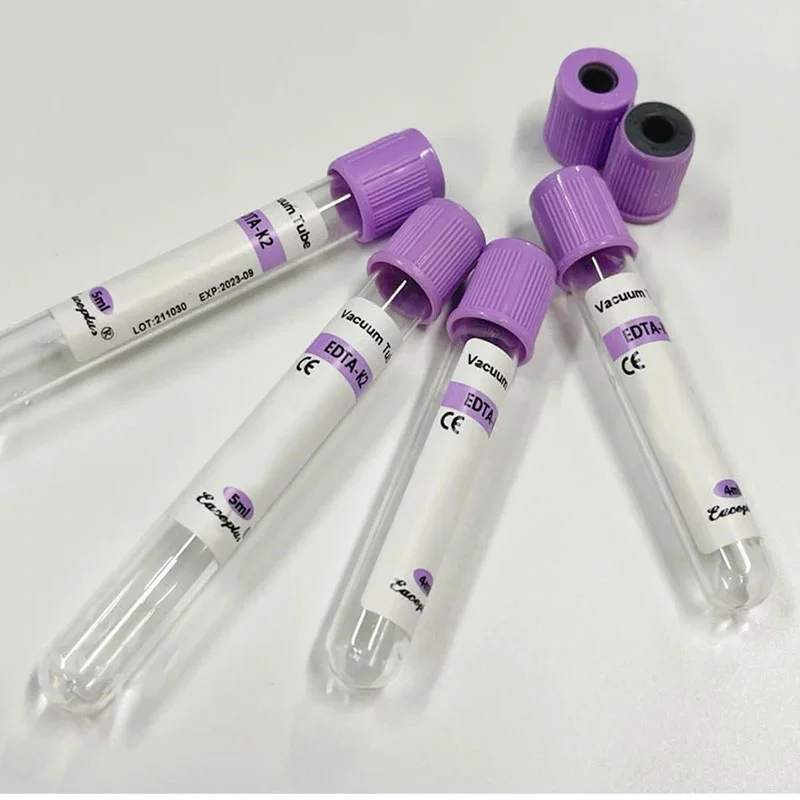
- EDTA K2 (Dipotassium EDTA)
- EDTA K3 (Tripotassium EDTA)
For more details on EDTA tube types, visit our EDTA Tube Product Category.
Why is EDTA the Preferred Anticoagulant for CBC?
EDTA is the gold standard anticoagulant for CBC testing due to several key advantages:
- Preserves Cell Morphology – Unlike other anticoagulants (like heparin or citrate), EDTA maintains the shape and structure of blood cells, ensuring accurate cell counts and morphology assessment.
- Prevents Clotting Effectively – By binding calcium ions, EDTA ensures that blood remains in a liquid state, preventing microclots that could interfere with automated hematology analyzers.
- Minimal Effect on Cell Volume – EDTA does not cause significant shrinkage or swelling of red blood cells, which is crucial for accurate hematocrit (HCT) and mean corpuscular volume (MCV) measurements.
- Compatibility with Automated Analyzers – Most modern hematology analyzers are calibrated to work with EDTA-anticoagulated blood, making it the preferred choice.
To understand the principle of EDTA anticoagulant, check out our detailed guide: What is the Principle of EDTA Anticoagulant?
Which EDTA Tube is Best for CBC?
The most commonly used EDTA tube for CBC is the Lavender-top EDTA tube (K2 or K3 EDTA). Here’s a breakdown of the best options:
EDTA K2 (Dipotassium EDTA) Tube
- Volume: Typically 1.8 mL to 2.7 mL (for adults)
- Concentration: 1.5–2.2 mg/mL of blood
- Best for: Standard CBC tests, automated hematology analyzers
- Why? EDTA K2 provides optimal anticoagulation without altering cell morphology.
For high-quality EDTA K2 tubes, explore Siny Medical’s EDTA K2 Tube (1.9mL).
EDTA K3 (Tripotassium EDTA) Tube
- Volume: Similar to K2 tubes
- Concentration: Slightly higher EDTA concentration
- Best for: Pediatric or small-volume blood collections
- Why? EDTA K3 is equally effective but may be preferred in low-volume draws.
For more details on EDTA tube selection, visit EDTA Tubes for Blood Collection.
Proper Handling and Storage of EDTA Tubes
To ensure accurate CBC results, proper handling and storage of EDTA tubes are essential. Here’s what you need to know:
Correct Blood-to-Anticoagulant Ratio
- Underfilling the tube can lead to excess EDTA, causing cell shrinkage.
- Overfilling may result in inadequate anticoagulation, leading to microclots.
Mixing the Tube Immediately
- After blood collection, invert the tube 8-10 times to ensure proper mixing.
- Failure to mix can cause clotting or erroneous results.
Storage Conditions
- Room temperature (20–25°C) is ideal for CBC samples.
- Refrigeration (2–8°C) is acceptable but may affect platelet counts.
- Avoid freezing, as it can lyse blood cells.
For a detailed guide, read Proper Handling & Storage of EDTA Tubes.
EDTA Tube Types: K2 vs. K3 — What’s the Difference?
There are two major types of EDTA tubes you’ll encounter in clinical settings:
1. K2 EDTA Tube
Also known as dipotassium EDTA, this type is typically found in spray-dried form. It’s commonly used in vacuum blood collection systems. K2 EDTA is preferred for:
CBC tests
Flow cytometry
Molecular diagnostics
👉 Check out the K2 EDTA tubes here for a close-up of their specs and features.
2. K3 EDTA Tube
Known as tripotassium EDTA, it’s generally in liquid form and may slightly dilute blood, which could affect certain readings. It’s still used for CBC but is being slowly replaced by K2 in many modern labs.
Explore more about EDTA K3 tubes for deeper insights into usage and availability.
Mistakes to Avoid When Using EDTA Tubes
- Delayed Mixing – Not inverting the tube immediately can cause clotting.
- Using Expired Tubes – Expired EDTA tubes may lose vacuum or anticoagulant efficacy.
- Incorrect Fill Volume – Underfilled or overfilled tubes lead to inaccurate results.
- Prolonged Storage – Blood samples should be tested within 24 hours for CBC.
For safe disposal guidelines, check How to Safely Dispose of Used EDTA Tubes.
Wrapping It All Up
So, to circle back to our main question: Which EDTA tube is used for CBC? The answer is the lavender or purple-top EDTA K2 tube. It’s the most reliable, accurate, and widely used option in labs around the world. From sample integrity to ease of handling, it checks all the boxes for CBC and beyond.
Choosing the right EDTA tube isn’t just about compliance—it’s about accuracy, safety, and ultimately, saving lives.
Make sure you’re sourcing your tubes from trusted suppliers like EDTATube.com and follow the best practices for handling and disposal to keep your lab running smoothly.
FAQs
What color EDTA tube is used for CBC?
The standard color is purple or lavender.
Which is better for CBC—K2 or K3 EDTA?
K2 EDTA is generally preferred because it’s spray-dried and doesn’t dilute the sample.
Can you reuse EDTA tubes?
No. EDTA tubes are single-use only due to contamination and accuracy concerns.
How many times should the tube be inverted after collection?
Invert 8 to 10 times gently to ensure proper mixing.
What happens if EDTA is not mixed properly?
It can lead to clotted samples, which make accurate testing impossible.

